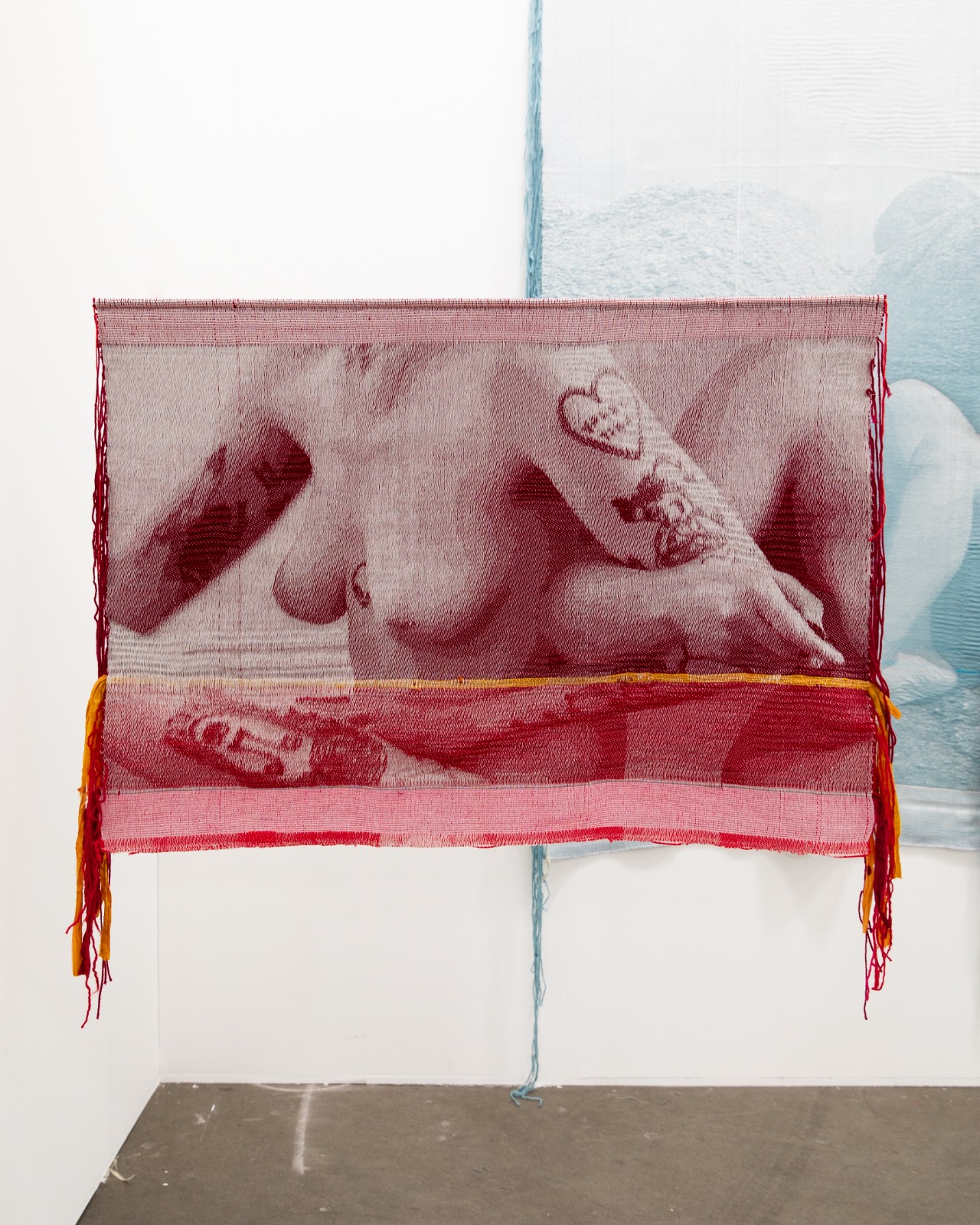LA-based artist Mia Weiner has been recognised for her distinctive amalgamation of photography and textile art. Starting with a digital photograph, Weiner alters her images to create illustrations that appear to reference and challenge classical art. Whether it’s a modern tattoo on an otherwise statuesque body or a power socket in the background of a mythical nymph, Weiner uses humour and composition to propose a new narrative on the themes of identity, gender and power. From these images, she produces hand-woven tapestries that defy the notions of photography and what it means to make the digital physical again.
Immortal Waters, which you recently displayed at Unseen, is your largest work to date. Can you share the process of making this piece and the impact that scale has on the work and on the overall narrative?
I was so excited about making this piece. With all of my work, I start by taking photographs that are then digitally altered to create my desired composition. I use this reference to map out the different woven structures that will dictate the various tones in the cloth once I’m ready to hand-weave the piece on the loom.
In general, I think a lot about scale, both in the size of the work and the scale of the body within the work. I find it interesting to explore what happens to a body when it becomes miniature versus monumental or when the work feels like a window to a scene where a cropped image only shows a foot – but the size of the foot is still life-size. For Immortal Waters, I took inspiration from sirens, mermaids and nymphs. I wanted the piece to be towering because it highlights how their mythologies have dictated how we think about many feminine constructs.
A lot of your imagery is inspired by ancient mythology. Why do you think its important to reference art history when creating work that challenges the current narrative on gender and power?
I think we learn so much from the images we look at – at least, I have over time. As a woman and as a queer person, creating these images, especially of my own body and of my peers who haven’t always necessarily had the agency to exhibit in a gallery or museum – is liberating. By shifting the perspective, I can play with moments in art history, some that I love and some that I want to subvert. I hope that even if I fail to change the viewer’s mind about the depiction of the body, they might start to question the images they are accustomed to. As a child, I adored Gauguin paintings. I loved the colours in them, but as I got older, I realised he often depicted female figures as objects. That’s a problematic narrative to see repeatedly. In my work, I try to think about the gaze and the agency that bodies can have and what it means in the present day to make something simultaneously soft and powerful.
